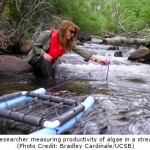How does a City flourish on a Desert Land?
A good example of desert-cities can be two cities of Saudi Arabia – Jubail and Yanbu – which excel in urban planning and structure, and are also the industrial hub of Saudi Arabia. A proper management and planning policies have been followed to raise these cities in desert. They are an example of the extraordinary vision of King Faisal and managerial skills of his successors – King Khaled and King Fahad. A few brief points would make us think about how these cities flourished in time.
Jubail and Yanbu came into existence in the 1970s. Their development was done in phases. An excellent planning policy was followed all through, which has led to a sustainable life in these cities, which is worth appreciating. The location of these cities is in proper desert, so challenges were many.
- Earthmoving – The sites were low lying coastal plains consisting of salt marsh and sand dunes. The area intended for development had to be raised 2.5 meters above the marine threshold in order to reduce the effect of salinity on plant growth and to protect the underground utility structure from salt water aggregation. Huge amounts of earth had been removed as the first step in urbanization.
- Soil Stabilization – To prevent sites from eroding, steps were taken to stabilize soil. The sites were planted with natural grasses. Fences and rows of trees were planted along the roads to protect them from drifting sands. Now, over the years, the trees have grown and Jubail and Yanbu give a much greener look.
- Power and Water Supply – The eastern province provides the cities with power and fresh water is supplied from the desalination plant.
- Waste Water Treatment – Waste water in treated in environment friendly manner in these cities. Industrial liquid waste is piped into special treatment plant located in Jubail industrial park, where it undergoes various treatment phases, and is utilized for irrigation in industrial area as well as along the roadways. About 800 kms of piping has been installed for the purpose of collecting waste water.
- Solid Waste Disposal – Solid waste is collected and transported to a regular landfill site outside the city. Hazardous wastes are incinerated in a specially designed plant, all of which are in strict regulation with environmental protection standards.
An excellent monitoring system keeps a record and traces any environmental hazard. Regular Environmental Impact Assessment studies are done, regular ambient air quality is monitored and regular water is tested for any hazardous substance.
Moral of the Story:
Present day urban sprawl requires an elaborate drainage system with the use of latest technologies. An integrated approach for managing proper drainage and solid waste disposal is required which is environment friendly. It involves many activities like waste prevention, segregation of household waste and hospital waste, waste recycling, composting, controlled burning and land filling. This requires involvement of government as well as local communities. A good drainage system is the backbone of a neat and clean city.
Towards New Technologies:
We can harness solar energy and rain water for a sustainable approach. Landscaping forms an integral part of modern day urban development. Initiatives have been taken up by various private companies who are trying to achieve this by investing in building of green cities. For example, Siemens is making an effort in this direction to build green cities with sustainable technologies. The coming decade would be an era of green buildings. Zed Earth, a residential enclave near the city of Bangalore. has been sponsored by Biodiversity Conservation of India Limited. This is the first ever residential dream project completed in India, which is self-sustained. It utilizes solar energy for its electricity requirements, recycles its own waste, and all of waste water is recycled as well. Next in line is the company Wipro, which is also planning such ventures.
 Lesson 3: Plant More Trees
Lesson 3: Plant More Trees
In order to fulfill the needs of growing population in India, large forests tracts have been cleared for urban development. Buildings, factories, etc., now occupy this space. The result is – we have lost the green cover. Now we face consequences like polluted air and dusty atmosphere. The realization has finally come that we need plants to clean the atmosphere and provide us with good, clean and fresh air. If we look into the past, we see how are ancient kings realized the role of trees in their respective kingdoms. Our kings and emperors had always emphasized on planting more trees, especially along the roads. King Ashoka took special interest in planting more fruit and shade trees for the benefit of humans. Medicinal plants, if not available in the kingdom, were imported and grown indigenously. Our elders have taught us to plant more trees so that we can reap the benefits of their fruits for generations to come.
Ecological Consequences of Loosing Large Forest Tracts:
Soil erosion, poor water retention, floods, changes in rainfall pattern, loss of biodiversity, loss of suitable habitat for animals and plants – are few of ecological consequences of deforestation. In fact, our carbon and water cycles undergo an overall change.
Moral of the Story:
For building residential areas, forests should not be destroyed, instead we can use wastelands. We cannot recreate forests or the ecosystems they support, so we should not tamper with their existence. Plant popular varieties of trees as well as plants of medicinal importance. All university campuses can give a greener outlook by planting trees and maintaining gardens. A novel idea of roof-top gardens can be put into practice by tall buildings.
A positive initiative taken by some, for example, Surat Municipal Corporation in Surat, Gujarat has planned to plant 2 lakh trees along roadsides and traffic isles. To encourage public participation, they have decided to distribute sapling of trees free of cost.
Destroying rainforests in Indonesia for oil palm plantations is already attracting wide media attention and is something to be concerned about. By such mindless deforestation, we are losing a part of our rich natural resources provided by these rainforests. There is no substitute for this kind of loss.
 Lesson 4: Plastics and Polythene Bags
Lesson 4: Plastics and Polythene Bags
Plastics are synthetic made up of organic polymers. They can be molded into any shape. Various materials, especially household items, are made from it. It is quite durable. But the greatest disadvantage is that it does not degrade.
Polythene bags are the most common form of plastic made of thermoplastic polymer. It is non-biodegradable and requires special treatment for disposal; hence, it accumulates becoming non-environment friendly. When it was introduced, it was widely used as a packaging material. Now, many countries and states have limited the use of polythene bags and plastics. For example, local authorities of Ladakh in India have banned it since 1998, so now polythene bags are nowhere to be seen in the state. In Sunderbans, plastic bags and polythene are banned, being in practice for over last ten years. Instead, jute bags are used by the people.














